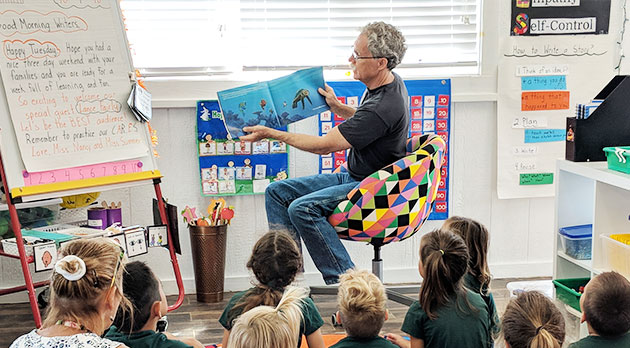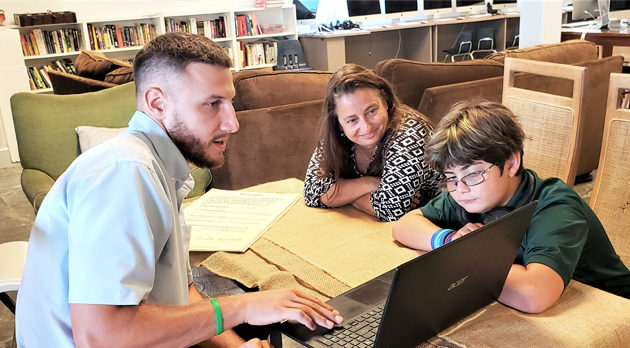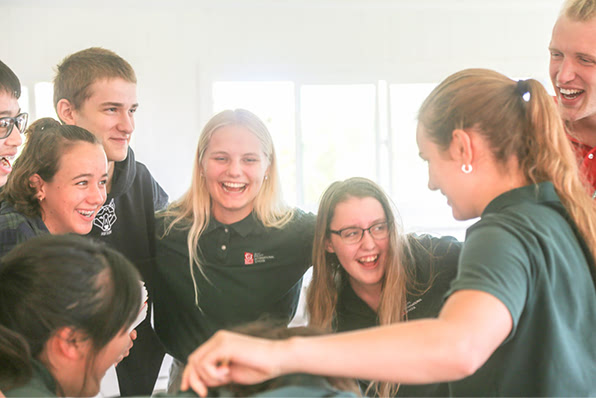
How Creative Are Your Children? Their Success Depends on It!
According to an IBM poll of 1,500 CEOs, the No.1 leadership competency of the future is creativity. Do you agree with this statement? Why is creativity crucial for future success?
Many of you have already heard me talk about The New York Times best-selling author, Daniel Pink's book, "A Whole New Mind." Daniel Pink wrote that we are now in the 'Conceptual Age' instead of the 'Information Age.'
This is an era where knowledge workers such as Engineers, Lawyers, and Doctors, are a dime a dozen. There are so much opulence and abundance that only products with a distinctive edge will survive.
In this Conceptual Age, one needs to go beyond left-brain skills -sequential, factual, analytical, and etc. to right-brain skills such as holistic thoughts, intuition, art, and music, to be successful.
Recently BTS's 'Boy with Luv' broke another Guinness World Record by smashing three records on Youtube. They are also the first group since the Beatles to earn three Billboard No. 1s in less than a year. Their success convinced me that we are living in a decisively different world.
What exactly is creativity?
In a Newsweek article written by Po Bronson and Ashley Merryman, creativity is mentioned as the production of something original and useful. It requires one to alternate between divergent thinking (generating unique ideas) and convergent thinking (combining ideas into results). This definition punctures popular psychology thought that creativity is exclusively a right-brain activity. Creativity isn’t about freedom from concrete facts. It points out that fact-finding and in-depth research are vital stages in the creative process. New neuroscience findings believe we need both sides of the brains to be creative.
Here’s the sequence of mental activitywhen a person is trying to find a creative solution:
1. Finding answers using the left-brain as it focuses on obvious facts and familiar solutions,
2. Moves on to right-brain to check and evaluate remote memories for unseen patterns and alternative meanings,
3. Both brains zeroing in on a promising idea - the ‘Aha!’ moment
4. Finally both sides of the brain evaluate the idea
"Creativity requires constant shifting, blender pulses of both divergent thinking and convergent thinking, to combine new information with old and forgotten ideas," said Bronson and Merryman. This sort of process means creative people are very good at directing their brains into bilateral mode, and the more creative they are, the more they will use both sides of the brain.
It is a myth to think that creative people are depressed, anxious, and neurotic, says Bronson and Merryman. There are a lot of movies and musicals that portray genius artists in such a manner, including 'Amadeus,' a film about Mozart. The reason creative students drop out of school is that they become discouraged and bored in creativity-stifling schools.
In fact, people who score high on creativity assessments tend to be more confident about the future, have stronger relationships, and deal better with setbacks. It's uncreative people who are at risk.
Can creativity be nurtured?
Yes! In the article by Bronson and Merryman, it echoes Professor Dweck’s findings, creativity is part of popular normal brain function that can be developed.
Creativity is not limited to just music and arts, the two most common subjects in which we think creativity plays an important role. In reality, creativity can be nurtured in all subject areas including, math, science, and engineering. According to Professor James Kaufman from the California State University San Bernardino (CSUSB), the key strategy in developing creativity is to alternate between intense divergent thinking and extreme convergent thinking repeatedly. Like all useful brain skills, real improvement does not happen in a short period such as a weekend workshop. It needs to be applied daily not only during school but also at home. Here are some of Bronson and Merryman's advice for teachers and parents:
Don’t tell someone to be creative.
"Such an instruction may just cause people to freeze up," said Bronson and Merryman. The University of Georgia Professor Mark Runco says, "do something only you would come up with — that none of your friends or family would think of." By using this approach, he's doubled people's creative output.
Imagination exercises don’t work. According to Professor Michael Mumford from the University of Oklahoma, half of the commonly used techniques intended to spur creativity don’t work or even have a negative effect. The worst of these programs focus solely on imagination exercises, expression of feelings, or imagery. They pander to the myth that all you have to do is let your natural creativity run wild. As previously pointed out, there’s much more to being creative than that.
Reduce screen time. For every hour spent watching TV, overall time on creative activities like fantasy play and art projects drops as much as 11 percent, says University of Texas Professor Elizabeth Vandewater. With kids spending about three hours in front of televisions each day, that would amount to a one-third reduction in creative time and have less time to develop a sense of creative self-efficacy through play.
Exercise. Bronson and Merryman said, "almost every dimension of cognition improves from 30 minutes of aerobic exercise. he type of exercise doesn't matter, and the boost lasts for at least two hours afterwards." However, this works only for people who are physically fit. For those who aren't, fatigue counteracts the benefits.
Get immersed in a passion. "Kids do best when they are allowed to develop deep passions and pursue them wholeheartedly — at the expense of well-roundedness," says Bronson and Merryman. American Psychological Association researcher Rena Subotnik has found that children who dive into one area and become experts in it have better self-discipline and handle setbacks more effectively.
Explore other cultures. Research has shown that those who have lived abroad outperform others on creativity tasks. Creativity is also higher on average for first or second-generation immigrants and bilinguals. The theory is that living abroad, being exposed to people from other countries, or even watching a slideshow about another culture helps people be more adaptable and flexible.
As I examined these strategies, I thought about how creativity is fostered at APIS.
For example, take a look at our school's four core emphases:
1) Spiritual Growth;
2) Science, Math, and Computer Education;
3) Performing and Visual Arts; and
4) East Asian Competencies.
Our core emphases focus on multilingualism and cross-cultural understanding. I see a strong alignment of these emphases with the above strategies and what creativity experts say is the essence of teaching creativity. I am convinced more than ever that our school's mission and vision keep us on the right track for raising creative leaders of the New Conceptual Age — or, as I prefer to call it, the New Pacific Century.
Reference:
Bronson, P., & Merryman, A. (2010, July 19). The Creativity Crisis. Newsweek, p.44-50.
Bronson, P., & Merryman, A. (2010, July 12). Forget Brainstorming. Newsweek, p. 50.











